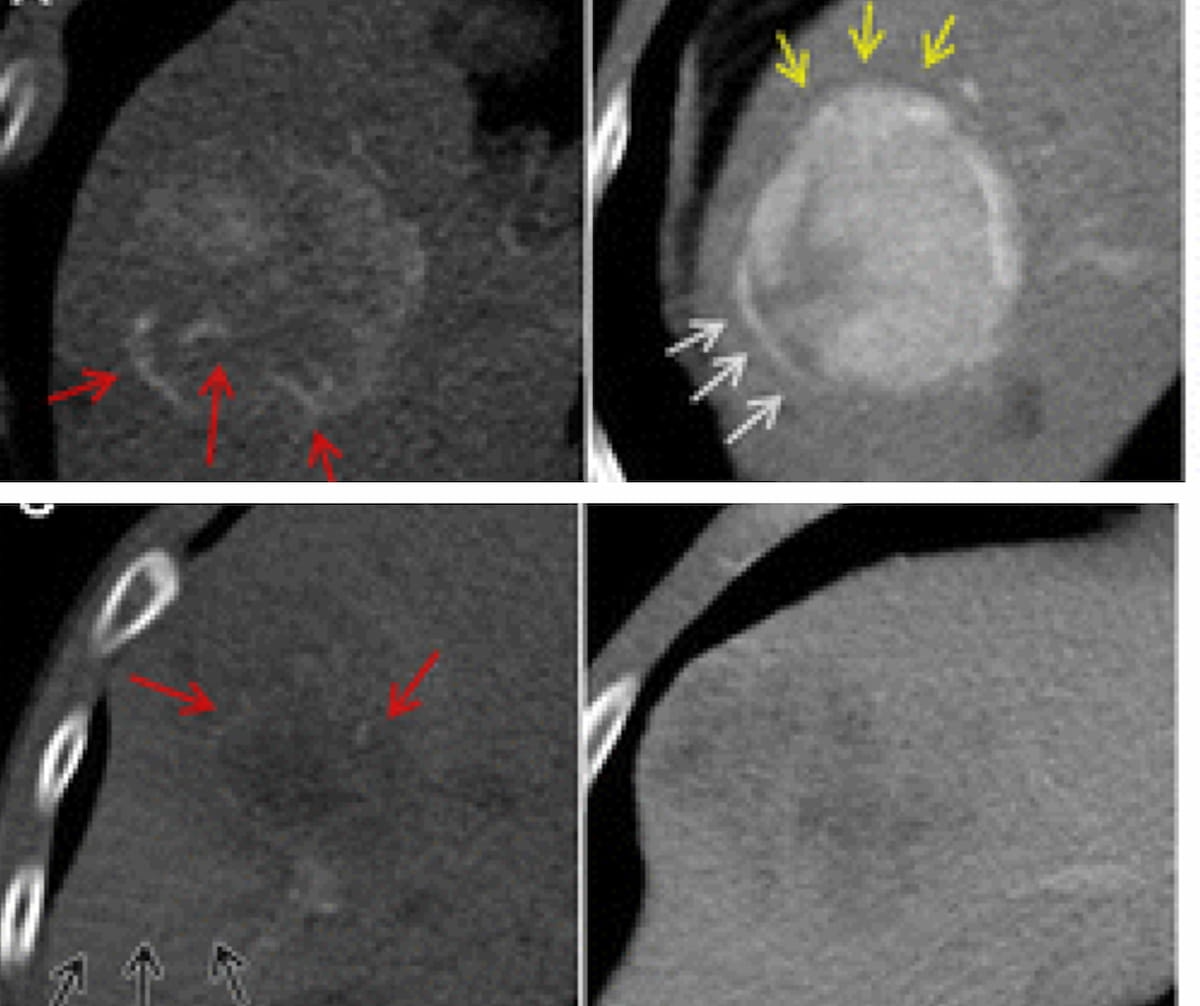Microvascular Invasion in Hepatocellular Carcinoma: Can a CT Radiomics Model Have an Impact?
A hybrid computed tomography radiomics model demonstrated up to an 86 percent area under the curve in predicting microvascular invasion in patients with hepatocellular carcinoma in a recently published study.
New research suggests an emerging radiomics model that can predict microvascular invasion (MVI) based on multiphase computed tomography (CT) may be beneficial in preoperative planning for patients with hepatocellular carcinoma (HCC) undergoing a hepatectomy procedure.
For the study, recently published in Radiology, researchers developed a hybrid multiphase CT radiomics model for predicting MVI and also sought to identify differentially expressed genes associated with MVI in patients with HCC. The study cohort consisted of 773 patients (median age of 56), including 586 patients with hepatitis B virus infection (76 percent) and 481 patients having liver cirrhosis (65 percent), according to the study.
The researchers found the hybrid model’s combination of features, including two-trait predictor of venous invasion (TTPVI), pseudocapsule, radiomics score and peritumoral enhancement, had an area under the curve (AUC) between 84 to 86 percent for the prediction of MVI in patients with HCC. The four aforementioned features were independently associated with MVI with multivariable analysis revealing a 6.78 odds ratio (OR) for TTPVI, a 4.50 OR for pseudocapsule, a 3.20 OR for peritumoral enhancement and a 2.23 OR for the radiomics score.
In the outcome study cohort of 121 patients with a median follow-up period of 20.6 months, researchers noted HCC recurrence in 35 patients and 32 patients died. The study authors said recurrence-free survival rates were 74.4 percent at one year and 71.1 percent at two years. Overall survival rates ranged from 93.4 percent at one year to 73.6 percent at five years, according to the study. The researchers said the hybrid model score was associated with both recurrence-free survival and overall survival rates of patients with HCC in the study.
“ … The hybrid model, which combined pseudocapsule, (TTPVI), peritumoral enhancement and radiomics score (output of the total radiomics model), performed the best for all patient groups. Moreover, the model-derived score could successfully categorize HCC in terms of overall survival and early recurrence-free survival,” wrote Shenghong Ju, M.D., Ph.D., who is affiliated with the Jiangsu Key Laboratory of Molecular and Functional Imaging within the Department of Radiology at Zhongda Hospital and the School of Medicine at Southeast University in Nanjing, China.
Images courtesy of Radiology.

(Editor’s note: For related content, see “Current Perspectives on the BCLC Staging System for Hepatocellular Carcinoma,” “Abbreviated MRI and Early-Stage Hepatocellular Carcinoma: What a New Multicenter Study Reveals” and “Study Says Machine Learning MRI Model May Help Predict Recurrence Risk of Hepatocellular Carcinoma.”)
Based on their findings, Ju and colleagues suggested that different types of immune cells that can infiltrate the tumor may play a role in the presence of imaging features associated with MVI.
In an accompanying editorial, Ronald M. Summers, M.D., Ph.D. noted that the low immune cell infiltration in MVI-positive tumors with glucose metabolism involvement was another key finding that may have implications for the treatment of HCC.
“It is unsurprising that tumors would be highly metabolically active with increased energy requirements and glucose metabolism, components of the Warburg effect,” wrote Dr. Summers, a senior investigator and staff radiologist at the NIH Clinical Center in Bethesda, Md. “What is of greater interest is the reduced infiltration of immune cells in MVI-positive tumors; this finding suggests an approach to improving therapy based on greater immune cell activation or tumor penetration.”
While pointing out a high primary liver cancer incidence for men in East Asia, the study authors acknowledged the possibility of selection bias given the makeup of the study cohort (633 men and 140 women). They noted the majority of patients in the study had virus-related HCC and emphasized that additional model validation is necessary before the study findings could be extrapolated to patients with non-alcoholic steatohepatitis-related HCC. The researchers also conceded the inherent biases of a retrospective study.
GE HealthCare Debuts AI-Powered Cardiac CT Device at ACC Conference
April 1st 2025Featuring enhanced low-dose image quality with motion-free images, the Revolution Vibe CT system reportedly facilitates improved diagnostic clarity for patients with conditions ranging from in-stent restenosis to atrial fibrillation.
Can Photon-Counting CT be an Alternative to MRI for Assessing Liver Fat Fraction?
March 21st 2025Photon-counting CT fat fraction evaluation offered a maximum sensitivity of 81 percent for detecting steatosis and had a 91 percent ICC agreement with MRI proton density fat fraction assessment, according to new prospective research.